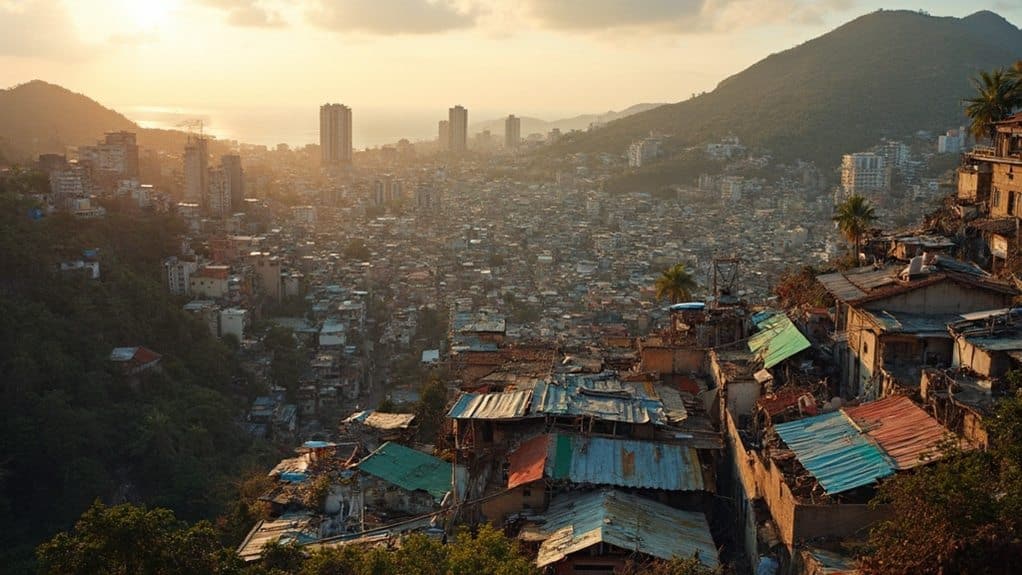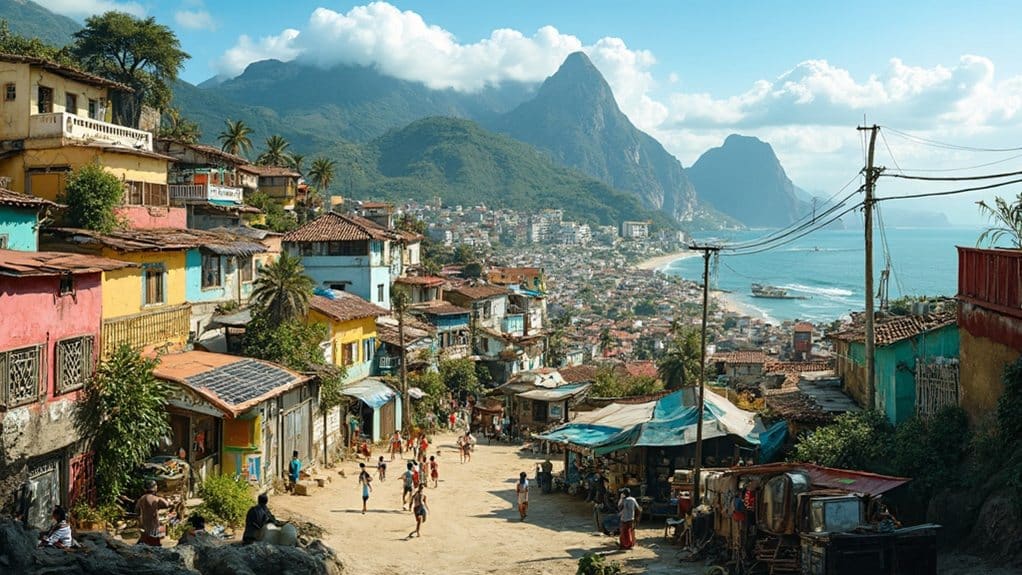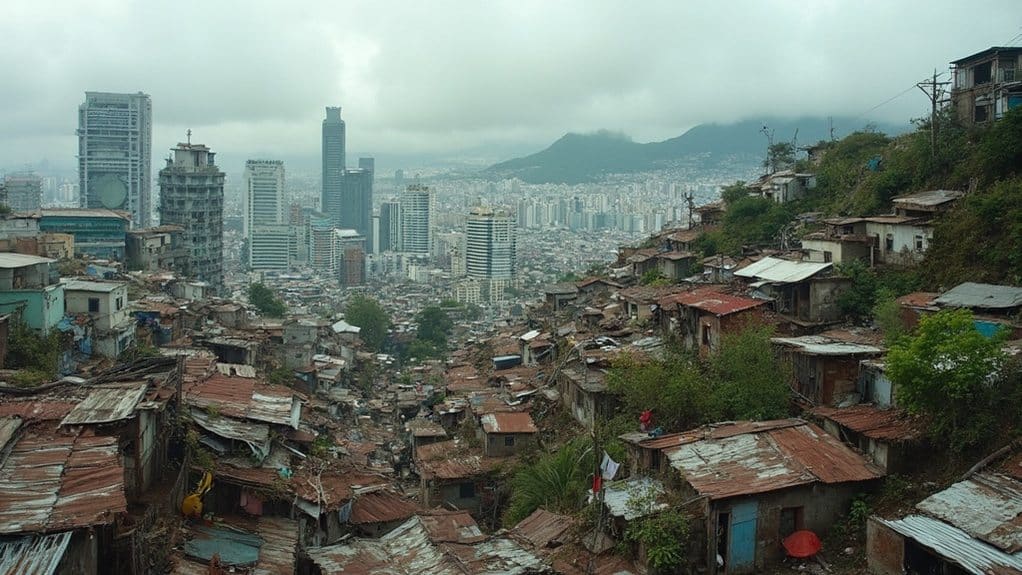South America is a region of sharp economic contrasts. Chile and Uruguay have reduced poverty through effective policies, while Argentina and Venezuela face poverty rates above 50%. These differences reflect different levels of success in governance and economic planning. Regional challenges include unequal income distribution and limited social mobility.
Key takeaways
- Poverty rates in South America vary dramatically, from 6% in Chile and Uruguay to over 50% in Argentina and Venezuela.
- Economic disparities are stark, with Chile’s per capita income of $15,000 contrasting sharply with Venezuela’s $1,800.
- Successful poverty reduction in Chile and Uruguay is based on effective social programmes, strong education and universal health care.
- Andean countries such as Bolivia, Colombia and Peru maintain moderate poverty rates between 29 and 36 per cent.
- Brazil and Ecuador face persistent poverty challenges with rates above 25%, despite varying levels of economic development.
Current poverty distribution

Let’s dive into South America’s eye-opening poverty landscape – it’s a tale of contrasts! Think of it as a family photo, with some members thriving while others need a helping hand. The current situation in Argentina and Venezuela might make you raise an eyebrow – they’re struggling with poverty rates of over 50%, a harsh reality brought on by years of economic struggle. But look at Chile and Uruguay and you’ll see a different story unfolding, with their impressive 6% poverty rates showing us what’s possible with steady leadership and smart social programmes.
Picture this: Bolivia, Colombia and Peru are like siblings walking the middle road, with poverty rates dancing between 29-36%. Brazil and Ecuador are also making progress, although their rates above 25% remind us that there’s still work to be done. It’s like looking at a garden – some areas are blooming beautifully, while others need extra care and attention.
- Chile & Uruguay: ~6% poverty rate
- Bolivia, Colombia & Peru: 29-36
- Brazil & Ecuador: Over 25%
- Argentina & Venezuela: Over 50%
These numbers aren’t just statistics – they represent real families facing real challenges. Each percentage point reflects countless stories of struggle and resilience across this vibrant continent. By understanding these patterns, we can better understand what’s working, what’s not, and where to focus our energies for meaningful change.
Economic disparities between nations

Think of South America as a fascinating economic jigsaw puzzle, with each piece telling its own unique story. Chile stands tall with a per capita income of $15,000, creating opportunities for its citizens, while Venezuela faces daunting challenges at $1,800. These numbers are more than just statistics; they represent millions of families living very different realities.
Let’s break this down into something we can all understand:
- Chile and Uruguay boast poverty rates you can count on your fingers.
- Argentina struggles with economic instability that pushes poverty above 50%.
- Venezuela faces a perfect storm of hyperinflation and falling living standards.
Think of it as a tale of two roads: some countries invested in solid economic foundations – like building a house on rock – while others built on the shifting sands of short-term politics. The result? We’re seeing them in real time, from the bustling shopping centres of Santiago to the empty shelves of Caracas supermarkets.
The solutions aren’t mysterious, but they do require commitment:
- Strong institutions that transcend political cycles
- Smart investment in education and infrastructure
- Consistent economic policies that build investor confidence
- Social programmes that actually reach those in need
Remember: Every economy tells a story of choices made and paths taken. Understanding these differences helps us learn what works and what doesn’t in the pursuit of shared prosperity.
Social Policy Impact

Let’s explore the fascinating world of social policy in South America – it’s quite a story! Consider two different paths: Chile and Uruguay lead the way with well-designed social programmes that keep poverty below 7%, while Argentina and Venezuela face tough challenges with more than half their population in poverty.
Think of social policies as building blocks for national prosperity. Get them right, like Chile’s pension system or Uruguay’s health care, and amazing things happen. These countries didn’t just stumble into success – they made careful plans, stuck to them and delivered on their promises to citizens.
Looking at middle performers like Colombia and Peru shows us that good intentions aren’t enough. These countries have made progress, but still face hurdles in implementing programmes consistently. It’s like having a great recipe but missing key ingredients – you might get decent results, but not the masterpiece you’re aiming for.
The real magic happens when countries
- Build reliable safety nets
- Invest in education and health
- Create employment opportunities
- Maintain stable economic policies
- Listen to the needs of the community
Countries struggling with poverty aren’t destined to stay there – their neighbours have cracked the code! By studying what works (and what doesn’t), nations can build a better future for their citizens. After all, when it comes to fighting poverty, we’re all in this together, learning and growing as we go.
Successful models for poverty reduction

Let’s look at something remarkable that’s happening in South America – Chile and Uruguay have cracked the poverty code, bringing their rates down to just 6.5% and 6.0% respectively. Think of it as a masterclass in smart governance, where both countries rolled up their sleeves and got to work.
Imagine this: Children going to quality schools, families accessing healthcare without breaking the bank, and communities building a stable future. It’s not magic – it’s what happens when you combine sound planning with unwavering commitment. The secret sauce? A mix of practical approaches:
- Strong education systems that open doors
- Universal health care that keeps families healthy
- Economic policies that create real opportunities
- Transparent institutions that inspire confidence
While some of their neighbours still struggle with poverty rates above 25%, Chile and Uruguay are showing us what’s possible. They have turned theory into practice, proving that lifting people out of poverty isn’t just a nice idea – it’s absolutely doable with the right game plan.
The beauty of these success stories lies in their simplicity: set clear goals, stick to them and keep improving. It’s like following a tried and tested recipe – you just need the right ingredients and patience to make it work. Best of all? Every country can adapt these lessons to its own kitchen.
Regional economic challenges

Let’s take a look at South America’s economic history – it’s quite a rollercoaster ride! Think about it: in some places only 6% of people live in poverty, while just a few borders away that figure jumps to a staggering 53%. The contrast really hits home when you look at Argentina and Venezuela, where skyrocketing prices have made grocery shopping a daily challenge for millions of families.
The bright spots? Chile and Uruguay are shining examples of what’s possible. Their recipe for success combines stable jobs with smart social programmes that keep poverty rates below 7%. But zoom out to the majestic Andean region and you’ll see a different picture. Countries like Bolivia, Colombia and Peru face tougher challenges, with around a third of their population living in poverty – that’s between 29% and 36% of the population struggling to make ends meet.
So what’s really going on? Think of it as a jigsaw puzzle with missing pieces:
- Roads and bridges that need serious upgrading
- Schools that could use more resources
- Job markets that yo-yo up and down
These aren’t just numbers on a page – these are real families facing real challenges every day. The good news? Understanding these differences helps us see where change could have the biggest impact. It’s like having a map that shows exactly where to build bridges between struggle and success.



